If you’re a garden hanging bag consumer, you’ll want to know the benefits of using Hanging Pocket Bags: They save space, are versatile, and easy to use and maintain. These bags work well for herbs, succulents, small flowering plants, and more. For optimal growth and visual appeal, follow these tips for hanging and arranging Hanging Pocket Bags: Proper placement, spacing, and soil preparation are key. Whether you’re a seasoned horticulturist or just starting out, Hanging Pocket Bags are a great option for your gardening needs!
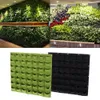
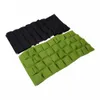
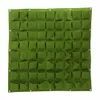
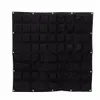
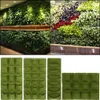
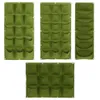
Benefits of using Hanging Pocket Bags
These bags are designed to offer numerous benefits for gardeners of all levels. They’re versatile, easy to use and maintain, and they allow you to save space without sacrificing quality or yield. In this article, we’ll explore each of these advantages in more detail.
Perhaps the most obvious benefit of using garden hanging pocket bags is their space-saving potential. If you’re working with limited square footage, it can be challenging to find enough room to grow everything you want. Hanging pocket bags offer a solution by utilizing vertical space that might otherwise go to waste. By hanging your plants, you can create a living wall effect that not only maximizes your growing area but also adds visual interest to your garden.
Another advantage of pocket bags is their versatility. They come in a variety of sizes and materials to suit different plant types, making them ideal for growing everything from herbs to flowers to vegetables. Additionally, because they’re portable, you can move them around as needed to follow the sun or protect your plants from harsh weather conditions.
Furthermore, hanging pocket bags are incredibly easy to use and maintain. Most bags come equipped with built-in drainage holes, which prevent water from accumulating and causing root rot. They also reduce the risk of pests and diseases by keeping plants off the ground where they’re less likely to encounter soil-borne pathogens. And because they’re made from durable materials like heavy-duty canvas or recycled plastic, they’ll last multiple growing seasons with minimal upkeep.
Types of plants and flowers that work well in Hanging Pocket Bags
The types of plants and flowers that work well in hanging pocket bags are varied and diverse. Herbs, succulents, small flowering plants, and more can all thrive in these bags. Here are some plants that you may consider planting in your hanging pocket bags.
Herbs: One of the most popular types of plants that work well in hanging pocket bags are herbs. Herbs like basil, parsley, oregano, and thyme are easy to grow and maintain in these bags. They can also be used for seasoning food and adding flavor to your dishes.
Succulents: Succulents are another type of plant that works great in hanging pocket bags. They require little water and maintenance, making them ideal for busy gardeners. Some of the best succulent varieties to consider include hens and chicks, string of pearls, and echeveria.
Small flowering plants: If you’re looking to add a pop of color to your hanging pocket bags, then small flowering plants are a great option. Plants like petunias, pansies, and violas are perfect for adding a vibrant splash of color to your garden.
Ferns: Ferns are also an excellent choice for hanging pocket bags. They are known for their lush foliage and can add a touch of elegance to your garden. Some of the best ferns to consider for hanging pocket bags include the Boston fern and the maidenhair fern.
In addition to these plants, there are many other types of plants and flowers that can be grown successfully in hanging pocket bags. When choosing plants for your hanging pocket bags, it’s essential to keep in mind the growing conditions that each plant requires. Make sure to choose plants that thrive in the amount of sunlight and water that your hanging pocket bags will receive.
Tips for hanging and arranging Hanging Pocket Bags
Proper Placement:
When choosing a spot to hang your pocket bags, it’s important to consider the amount of sunlight the area receives. Most plants require at least 6 hours of sunlight per day, so make sure you choose a location that can provide this. Additionally, be mindful of wind exposure as strong gusts can damage delicate plants. It’s also important to ensure that your chosen spot is easily accessible for watering and maintenance.
Spacing:
When it comes to spacing your hanging pocket bags, less is often more. While it may be tempting to pack as many plants as possible into each bag, overcrowding can lead to stunted growth and poor air circulation. Instead, aim to leave at least 6-8 inches of space between each plant. This will allow for proper root development and help prevent disease and pest issues.
Soil Preparation:
Before planting, it’s important to prepare the soil inside your hanging pocket bags. Start by filling each bag with a high-quality potting mix that contains a blend of peat moss, perlite, and vermiculite. These ingredients will help promote healthy root development and drainage. When planting, be sure to gently press down on the soil around each plant to eliminate any air pockets.
Arranging Your Pocket Bags:
Once your pocket bags are filled with soil and plants, it’s time to start arranging them. For the best visual appeal, try to group plants with similar growing requirements together. This will not only look aesthetically pleasing but will also make it easier to water and fertilize efficiently. Additionally, consider varying the height of each bag by hanging them at different lengths. This will create a more dynamic and interesting display.
In conclusion, hanging pocket bags are a great option for gardeners looking to save space and add some vertical interest to their gardens. By following these tips for proper placement, spacing, and soil preparation, you can ensure that your plants thrive and look beautiful all season long. Happy gardening!
FAQ
Q1. What are Hanging Pocket Bags for Plants and Flowers?
Hanging Pocket Bags for Plants and Flowers are a practical solution for those who want to maximize their garden space. The bags are made of sturdy materials and come with multiple pockets that can be used to plant various plants, flowers, herbs, and vegetables in a vertical position. They are designed to be hung on a wall, fence, or balcony railing to save space while adding a touch of greenery to your surroundings.
Q2. How do I use Hanging Pocket Bags for Plants and Flowers?
Using Hanging Pocket Bags for Plants and Flowers is easy and straightforward. First, choose a suitable location where you want to hang the bag. Make sure the area gets enough sunlight and is easily accessible for watering and maintenance. Then, fill each pocket with soil and add the desired plants or seeds. Water them regularly and watch them grow!
Q3. Can I use Hanging Pocket Bags for Plants and Flowers indoors?
Yes! Hanging Pocket Bags for Plants and Flowers can be used both indoors and outdoors. If you have limited space indoors but still want to enjoy gardening, these bags are an excellent option. Hang them near a sunny window or on a wall to create a beautiful living wall inside your home.
Q4. Are Hanging Pocket Bags for Plants and Flowers durable?
Yes! Home & Garden’s Hanging Pocket Bags for Plants and Flowers are made of high-quality materials that are built to last. They are designed to withstand harsh weather conditions and can be used year after year. The bags are also reusable and eco-friendly, making them an excellent choice for environmentally conscious gardeners.
